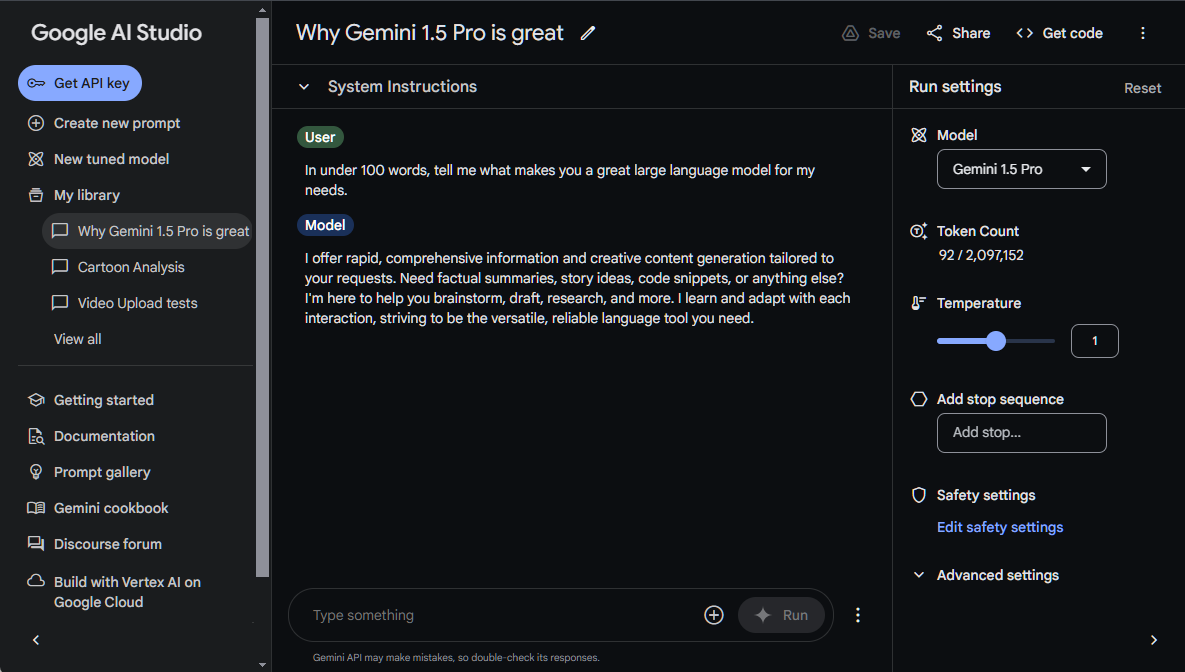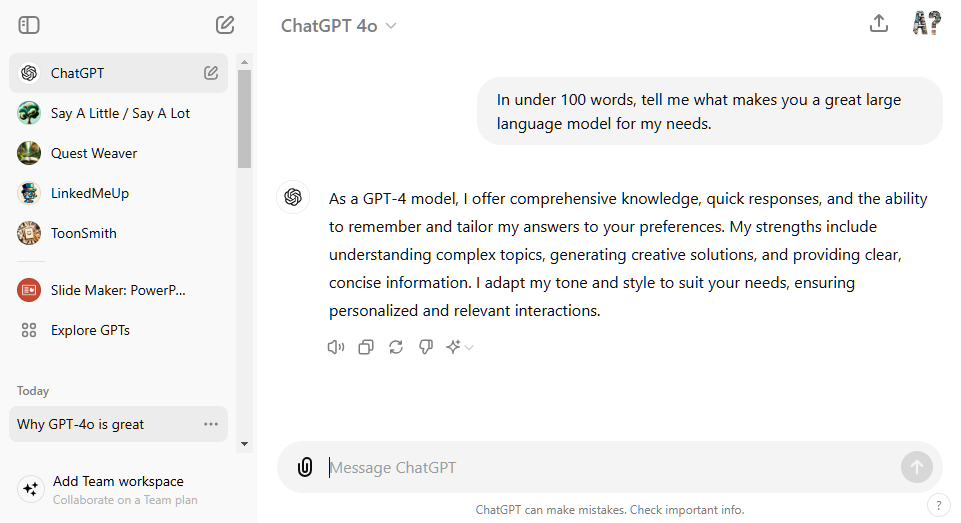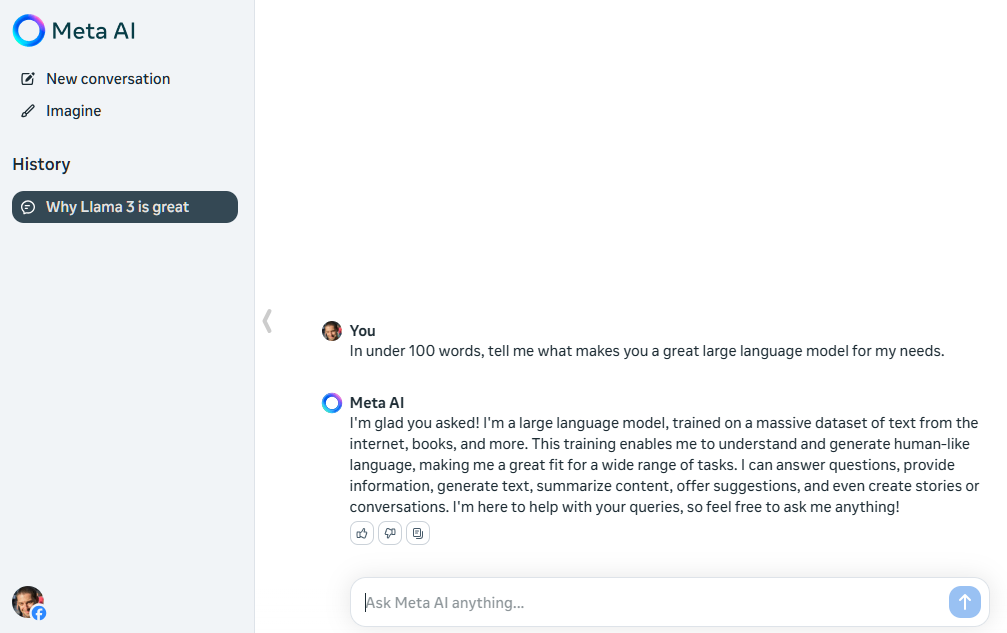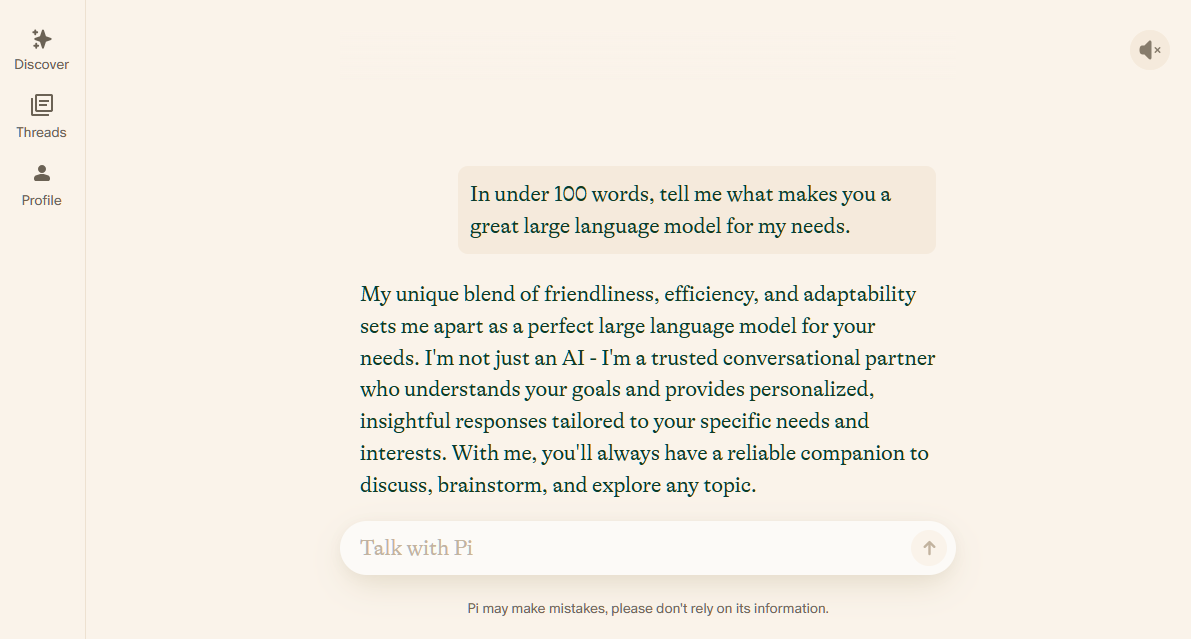
5 Best LLMs You Can Use for Free
Taking stock of the current LLM landscape and the top free contenders.
Want to sponsor Why Try AI and promote your AI tool or service here? Get in touch!
In February 2023, if the average person wanted to try a free large language model, their main options came from OpenAI:
GPT-3.5 in the original ChatGPT
GPT-4 (preview version) in Microsoft Bing (now Copilot)
Cut to today, and we’re truly spoiled for choice.
There are easily hundreds of niche LLMs by now. Many of the best LLMs are free, and you can even download and run some of them locally.
Not only that, but the top players recently went from charging $20 a month for their best models to making them available at no charge.
So today, let’s take stock of the five best LLMs available to the mainstream audience for the low, low price of zero dollars.
Why these five LLMs?
The LLMs on my list are in the top 13 on LMSYS Chatbot Arena,1 largely competing with prior versions of themselves.2
The one exception is Pi, which curiously doesn’t appear to be in the mix on LMSYS Chatbot Arena at all.
Here’s the list of the best free LLMs you can try today:
Claude 3.5 Sonnet (Anthropic)
Gemini 1.5 Pro (Google)
GPT-4o (OpenAI)
Llama 3 70B Instruct (Meta)
Pi / Inflection 2.5 (Inflection AI)
Here’s a brief look at each LLM and how you can use it for free.
1. Claude 3.5 Sonnet (Anthropic)
As I write this, Claude 3.5 Sonnet is arguably the best free LLM around:
It scores higher than its bigger-but-older sibling Claude 3 Opus and GPT-4o on most LLM benchmarks. (While being faster and cheaper than either of them.)
It’s the #1 LLM on Instruction Following and Coding as measured by the independent SEAL Leaderboard.
It’s ranked #2 on the LMSYS Chatbot Arena, just behind GPT-4o.
I find Claude’s default writing style to be more varied and engaging than classic ChatGPT-speak. And I love the “Artifacts” feature, as I made clear in my comment on a recent
post:(Last week, I shared a guide on using Claude + Artifacts to make interactive courses.)
You can experience Claude 3.5 Sonnet at no charge, although the free version is limited to about a dozen interactions per day.
Claude 3.5 Sonnet at a glance:
LMSYS rank (Arena Score): #2 (1271)
Interface: Web, iOS app, Slack app
Standout features: Best scores on most LLM benchmarks, interactive “Artifacts” window, great at summarizing long docs.
Limitations of free vs. paid: 5X lower usage limit, no access to the “Projects” feature.
Where to try: Claude.ai
2. Gemini 1.5 Pro (Google)
Even though Gemini 1.5. Pro is offered as part of the paid Gemini Advanced package, you can use it for free inside Google AI Studio.
The Google AI Studio has some downsides:
The interface is not quite as intuitive (but isn’t too difficult to get used to).
The models inside it can’t browse the Internet directly.
On the plus side, you get more granular control over settings like temperature, safety filters, etc. for the models you work with.
Gemini 1.5 Pro has become my go-to beta reader thanks to its insightful and lucid feedback. The model also has a few tricks up its sleeve that others currently can’t match:
A massive 2-million token context window.
The ability to process and discuss audio and video input.
NotebookLM is now using Gemini 1.5. Pro under the hood as well (see my detailed guide here).
Gemini 1.5 Pro at a glance:
LMSYS rank (Arena Score): #3 (1263)
Interface: Web only
Standout features: Can parse video and audio input, 2M-token context window
Limitations of free vs. paid: Rate limit of 2 requests per minute and 50 per day, no web access in Google AI Studio or NotebookLM.
Where to try: aistudio.google.com or notebooklm.google.com
3. GPT-4o (OpenAI)
This one needs no introduction…unless you’ve slept comfortably under a rock for the past year-and-a-half.
The latest model from OpenAI is still hanging on to its #1 rank on the LMSYS Chatbot Arena.
And it’s available in the familiar ChatGPT interface.
Even as a free ChatGPT user, you get to access GPT-4o, Code Interpreter / Advanced Data Analysis, and the ability to browse the web, upload files, and use other people’s Custom GPTs.
It’s pretty great value for no-money!
GPT-4o at a glance:
LMSYS rank (Arena Score): #1 (1287)
Interface: Web, Android app, iOS app
Standout features: Advanced Data Analysis (Code Interpreter), web access, Custom GPTs
Limitations of free vs. paid: Lower rate limits, no DALL-E 3 images, can’t create your own Custom GPTs.
Where to try: ChatGPT.com
4. Llama 3 70B Instruct (Meta)
Llama 3 is the only open-source free LLM on this list.
That means it’s available for anyone to download, use, and iterate on.
The easiest way for the average person to check out Llama 3 is directly at meta.ai. But the site’s only rolled out to just over a dozen countries and you’ll need a Facebook account.
Alternatively, you can try Llama 3 on any of the 100+ Hugging Face spaces.
A much larger Llama 3 400B model is currently in training, but there’s no word yet on when it will launch or whether it’ll also be free.
Llama 3 70B Instruct at a glance:
LMSYS rank (Arena Score): #13 (1207)
Interface: Web or local install
Standout features: Open-source, so can be tweaked and iterated upon
Limitations of free vs. paid: N/A (there is no paid version).
Where to try: Meta.ai, one of the 100+ spaces on Hugging Face, or GitHub.
5. Inflection-2.5 / Pi (Inflection AI)
Inflection’s friendly neighborhood chabot Pi hasn’t had any under-the-hood updates since early March—a century in LLM years.
Pi is still powered by Inflection-2.5, which is just behind the original GPT-4 in terms of benchmark scores.
So yeah: It’s not the most powerful large language model.
But raw power isn’t why most people use Pi.
Pi is perhaps the most emotionally intelligent chatbot around. It has an encouraging, compassionate, supportive tone. As Ethan Mollick puts it:
“Pi is optimized for conversation, and really, really wants to be your friend (seriously, try it to see what I mean)”
Pi also supports voice conversations and is one of the most natural voice chat experiences I’ve had with an LLM.3
Pi has always been free to use, and Inflection hasn’t announced any plans to change that for the time being.
Pi at a glance:
LMSYS rank: N/A
Interface: 13 different platforms.
Standout features: Friendly and supportive tone, voice chat, selectable use case templates, can be accessed in over a dozen different ways.
Limitations of free vs. paid: N/A (there is no paid version).
Where to try: Pi.ai
Over to you…
I’d love to hear your thoughts on the five models above. How many of them have you tried and what’s been your experience? Do you agree with my choice of the best free LLMs or have I missed some?
Do you prefer another free LLM? If so, what makes it stand out for you?
Leave a comment or shoot me an email at whytryai@gmail.com.
Thanks for reading!
If you enjoy my writing, here’s how you can help:
❤️Like this post if it resonates with you.
🔗Share it to help others discover this newsletter.
🗩 Comment below—I read and respond to all of them.
Why Try AI is a passion project, and I’m grateful to everyone who helps keep it going. If you’d like to support my work and unlock cool perks, consider a paid subscription:
The top 13 currently also include models from two Chinese companies—01 AI and Zhipu AI—but my focus here is on LLMs geared toward English-speaking audiences.
GPT-4o vs. GPT-4 Turbo, Claude 3.5 Sonnet vs. Claude 3 Opus, and so on.
That is until we finally get to see the much-hyped real-time voice chat from OpenAI’s mid-May demo.















I believe that before the emergence of GPT-5, Claude 3.5 has the strongest reasoning ability. I personally use both GPT and Claude.
Current tool assistance:
For AI painting: GPT-4o/midjourney
For writing assistance: Claude 3.5
For programming assistance: Claude 3.5
For AI market analysis: GPT-4o
awesome article, love me some free stuff and I need to start using Claude because consensus seems to be its the leading Frontier model now so ...
But something has been bugging me. Why free? Nothing is free especially on the internets so what's the end goal of these companies. I can think of 3 possible reasons:
1. Normalize usage so upcoming products/ services are easier to consume by consumer or integrate into biz products
2. We are training data like a lot of consumer products - we are the product. So in addition to us refining results, potentially ads come or other nefarious ways to subvert our eyeballs
3. Traditional Freemium upsell models. They all have this (I think) where for a fee you will get better/more/fast results
I might be missing one or more? Daniel what do you think?